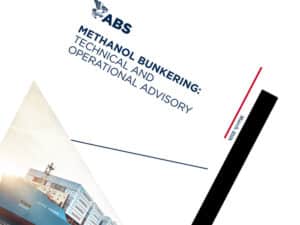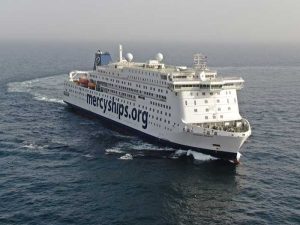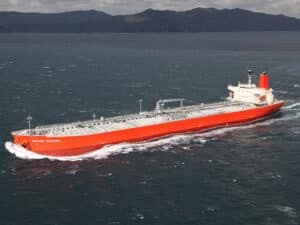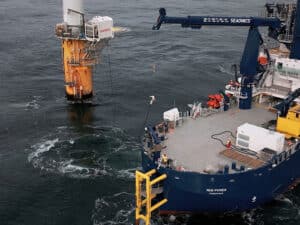
BOEM moves ahead on two more offshore wind projects
Written by Marine Log Staff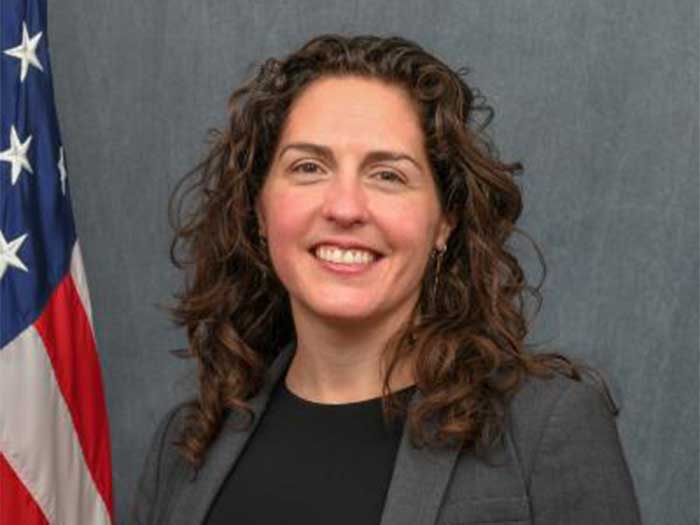
BOEM Director Amanda Lefton: “These two wind energy areas represent exciting progress toward having the first offshore wind lease sale in the Gulf of Mexico, where there is a mature industry base and the know how to advance energy development in the OCS.”
The Department of the Interior’s Bureau of Ocean Energy Management (BOEM) keeps upping the momentum for U,S. offshore wind development. Last Wednesday, BOEM announced two actions advancing the federal wind leasing process offshore California. The following day, it announced that it will conduct an environmental review of a proposed wind energy project offshore North Carolina. If approved, the project would be the first to operate offshore that state.
CALIFORNIA
To push ahead offshore California, BOEM will publish a Call for Information and Nominations (Call) to request information from the public and determine industry interest in commercial offshore wind energy development for two new areas within a 399-square-mile area located off central California, identified as the Morro Bay Call Area East and West Extensions. The new areas are adjacent to the Morro Bay Call Area, originally identified by BOEM in 2018. The extension areas will be included in BOEM’s overall analysis of the Morro Bay 399 Area.
Second, BOEM has formally designated the Humboldt Wind Energy Area (WEA) offshore northern California and will now proceed with an environmental review of this area, as required under the National Environmental Policy Act (NEPA).
“Today’s announcement builds on an earlier agreement between the White House, the Department of the Interior, the Department of Defense, and the state of California to advance areas for offshore wind off the northern and central coasts of California,” said BOEM Director Amanda Lefton. “If approved for offshore wind energy development, these areas could bring us closer to reaching this administration’s goal of deploying 30 gigawatts of offshore wind by 2030.”
“While we are still in the initial stages of BOEM’s leasing process, today’s announcement reflects years of working with ocean users, Tribal governments and local, state, and federal agencies to obtain the best available information to reduce potential conflicts,” said BOEM Acting Pacific Region Director Thomas Liu. “The Morro Bay Call and Humboldt Environmental Assessment offer important opportunities to further solicit feedback from tribes, ocean users and stakeholders.”
NORTH CAROLINA
The project offshore North Carolina and has the potential to provide considerable economic benefits to the region during construction and throughout the project’s lifetime. The project would make landfall in Virginia Beach and could eventually provide power to Virginia.
BOEM published a Notice of Intent (NOI) to Prepare an Environmental Impact Statement (EIS) in the Federal Register July 28, which will open a 30-day public comment period extending through 11:59 p.m. ET on August 30, 2021.
BOEM will review a Construction and Operations Plan (COP) submitted by Kitty Hawk Wind LLC (Kitty Hawk) for a commercial-scale, offshore wind energy project consisting of up to 69 total wind turbine generators, one offshore substation, inter-array cables, and up to two transmission cables that will make landfall in Virginia Beach.
North Carolina has set ambitious goals to develop 2.8 GW of offshore wind energy off of the state’s coast by 2030 and 8 GW by 2040. The state estimates that meeting that goal would power 2.3 million homes by 2040. The Commonwealth of Virginia enacted the Virginia Clean Economy Act in 2020, which sets a target of 100% carbon free electricity by 2050, with 5.2 GW of offshore wind energy by 2034. If approved, this project will contribute towards each of the two states’ offshore wind goals.
Additionally, the Commonwealth of Virginia, State of North Carolina, and State of Maryland have established the Southeast and Mid-Atlantic Regional Transformative Partnership for Offshore Wind Energy Resources (SMART-POWER) to “promote, develop, and expand offshore wind energy generation and the accompanying industry supply chain and workforce” in the region. Development of the Kitty Hawk Wind Project could help SMART-POWER promote the region as an offshore wind energy and industry hub and build the region’s supply of clean, renewable energy.

